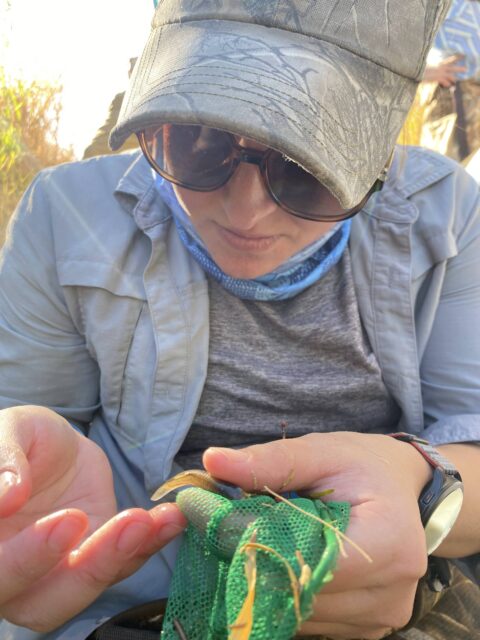
In late 2023, blue skies and sunshine found Sonoran Institute staff, partners, and friends knee-deep in water for our 16th annual fish survey. Their objective: identify which fish species are currently observed in the Santa Cruz River. Supported by funders like the Santa Cruz Valley National Heritage Area (in the Nogales area), and Pima County (in Tucson), ten different locations were visited for surveying. Two in Nogales were dry, a potential outcome of reduced monsoon activity. Both sites have been found dry at the time of survey before, although not for the last few years and one not since 2013.

The survey process has been well-practiced over successive years, with a light electric shock* gently stunning fish instream so that they can be collected with seine and dip nets. Individuals are identified and species numbers tallied, then the fish are returned to the river unharmed. This is an effective method of determining species diversity and estimating population numbers. Gathered each year, the data can be observed over time to give a sense of what types of fish are living and persisting in the river.

Thanks to the high-quality and clean water released from wastewater treatment plants, the Santa Cruz is able to support and foster a range of species. We were pleased to see the strong presence of the native longfin dace persisting in the river’s upper reaches near Nogales. The number and diversity of fish are indicators of river health and water quality and a testament to the collaboration and cooperation supporting the flowing and beautiful Santa Cruz River. This year, the survey effort included several volunteers as well as staff from Arizona Game and Fish Department, Bureau of Reclamation, Harris Environmental Group, Pima Association of Governments, Pima County, Tumacácori National Historical Park, University of Arizona, University of Arizona Museum of Natural History, and a retired former member of the U.S. Fish and Wildlife Service.











